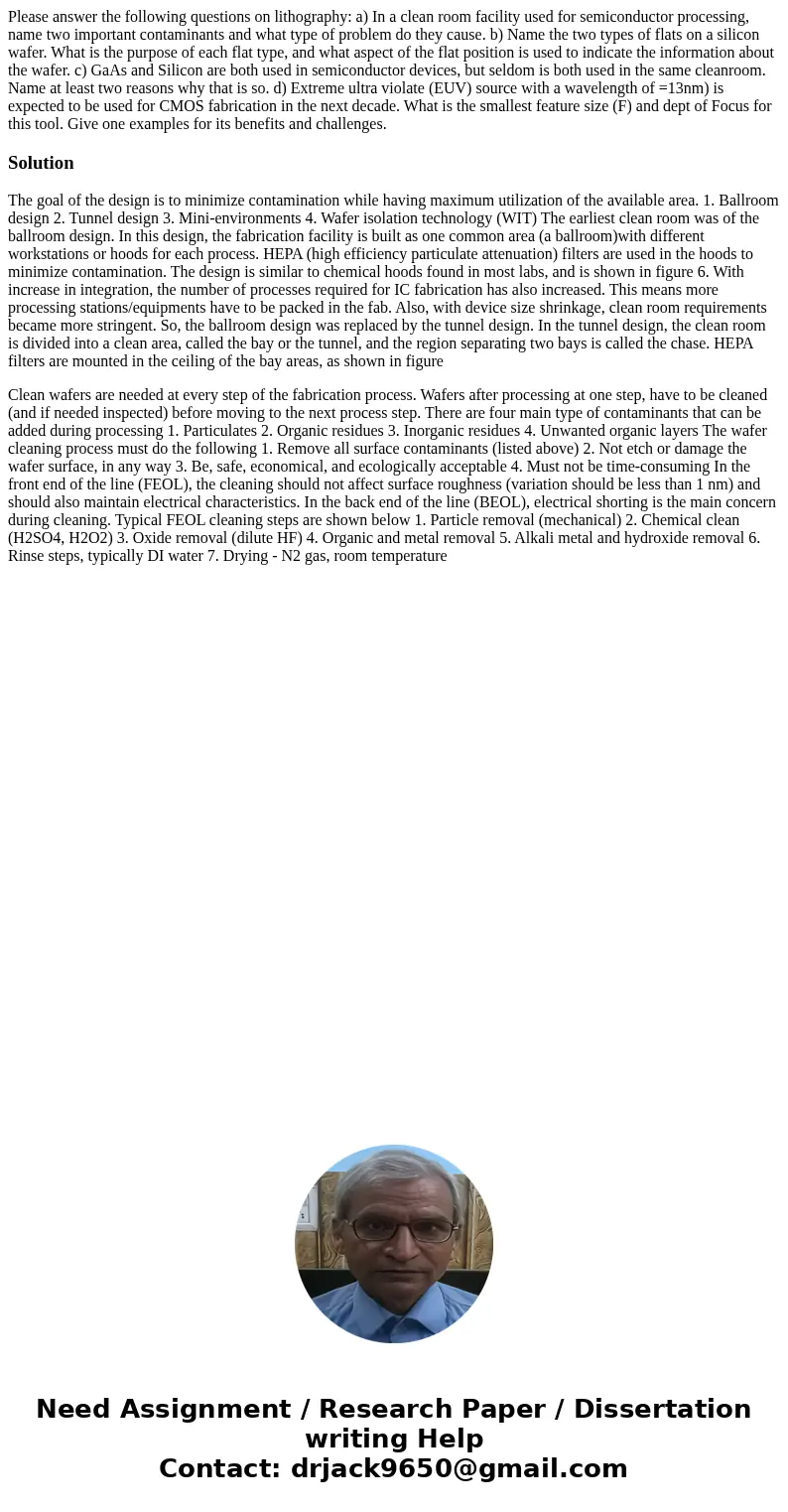Please answer the following questions on lithography a In a
Please answer the following questions on lithography: a) In a clean room facility used for semiconductor processing, name two important contaminants and what type of problem do they cause. b) Name the two types of flats on a silicon wafer. What is the purpose of each flat type, and what aspect of the flat position is used to indicate the information about the wafer. c) GaAs and Silicon are both used in semiconductor devices, but seldom is both used in the same cleanroom. Name at least two reasons why that is so. d) Extreme ultra violate (EUV) source with a wavelength of =13nm) is expected to be used for CMOS fabrication in the next decade. What is the smallest feature size (F) and dept of Focus for this tool. Give one examples for its benefits and challenges.
Solution
The goal of the design is to minimize contamination while having maximum utilization of the available area. 1. Ballroom design 2. Tunnel design 3. Mini-environments 4. Wafer isolation technology (WIT) The earliest clean room was of the ballroom design. In this design, the fabrication facility is built as one common area (a ballroom)with different workstations or hoods for each process. HEPA (high efficiency particulate attenuation) filters are used in the hoods to minimize contamination. The design is similar to chemical hoods found in most labs, and is shown in figure 6. With increase in integration, the number of processes required for IC fabrication has also increased. This means more processing stations/equipments have to be packed in the fab. Also, with device size shrinkage, clean room requirements became more stringent. So, the ballroom design was replaced by the tunnel design. In the tunnel design, the clean room is divided into a clean area, called the bay or the tunnel, and the region separating two bays is called the chase. HEPA filters are mounted in the ceiling of the bay areas, as shown in figure
Clean wafers are needed at every step of the fabrication process. Wafers after processing at one step, have to be cleaned (and if needed inspected) before moving to the next process step. There are four main type of contaminants that can be added during processing 1. Particulates 2. Organic residues 3. Inorganic residues 4. Unwanted organic layers The wafer cleaning process must do the following 1. Remove all surface contaminants (listed above) 2. Not etch or damage the wafer surface, in any way 3. Be, safe, economical, and ecologically acceptable 4. Must not be time-consuming In the front end of the line (FEOL), the cleaning should not affect surface roughness (variation should be less than 1 nm) and should also maintain electrical characteristics. In the back end of the line (BEOL), electrical shorting is the main concern during cleaning. Typical FEOL cleaning steps are shown below 1. Particle removal (mechanical) 2. Chemical clean (H2SO4, H2O2) 3. Oxide removal (dilute HF) 4. Organic and metal removal 5. Alkali metal and hydroxide removal 6. Rinse steps, typically DI water 7. Drying - N2 gas, room temperature

 Homework Sourse
Homework Sourse